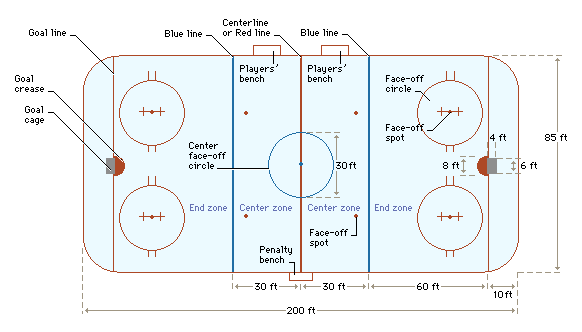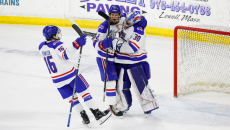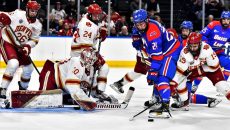Henry St. Pierre
Connector Staff
It’s finally hockey season at UMass Lowell! You can already hear skates slashing up the ice. You can smell the cold… and you can feel the cold, too.
Everybody should be able to be a part of the River Hawks hockey experience, but what if you have no clue what’s going on? What if you want to shout and go nuts when we score, but you don’t even know what a goal is?
Well, hopefully you know how goals are scored, but maybe you’re not familiar with college hockey rules. There ARE differences between the NHL and NCAA hockey, even if college hockey serves as a gateway to professional hockey.
First of all, many people get a kick out of watching fighting in the NHL. There’s no fighting in college hockey. If there is, there’s a five-minute major penalty and the player is disqualified for the next game.
Also, there’s no headhunting (direct contact to the head), as that results in a misconduct and major penalty at the minimum. There also shouldn’t be any post-whistle altercations. To continue with safety, all players must wear a shield or facemask.
The “trapezoid” refers to the area in NHL hockey in which the goaltender must not leave. There’s no trapezoid in college hockey.
Overtimes are played five-on-five, and ties do happen because there are no shootouts (for every conference except the NCHC and Big Ten).
There are no hand passes in the defensive zone (behind the team’s blue line) and deflections off a player’s skate resulting in a goal are treated as a goal unless it’s proven to have been intentional.
College hockey plays in a hockey arena that is exactly like an NHL arena – the same dimensions, lines, goals, etc.
In hockey, there are six players on the ice for each team: normally there is a center, right wing and left wing (forwards), right and left defensemen and a goaltender. The center and forwards usually lead offense, and the center is also usually the anchor of both sides of the ice. The defensemen, well, play defense. It’s not uncommon for one defender to be more offense-focused while the other is more of a physical player. The goaltender’s job is to stop the puck from going in their team’s net. Easier said than done, for sure.
There are three main rules to keep in mind while watching hockey: icing, offsides and the offside (two-line) pass.
Icing is when the opposing team passes the puck past the other team’s goal line, and this is called without the defense having to touch it.
A player is offside when they are past the defending team’s blue line without the puck. An offside, or two-line pass, occurs when a player passes the puck from behind their team’s blue line (out of their defensive zone) and past the center red line, thus crossing the two lines.
Like any sport, hockey’s rules might take a while to nail down, but hockey is a fast-paced, exciting and hard-hitting sport that is frosty fun to watch.




